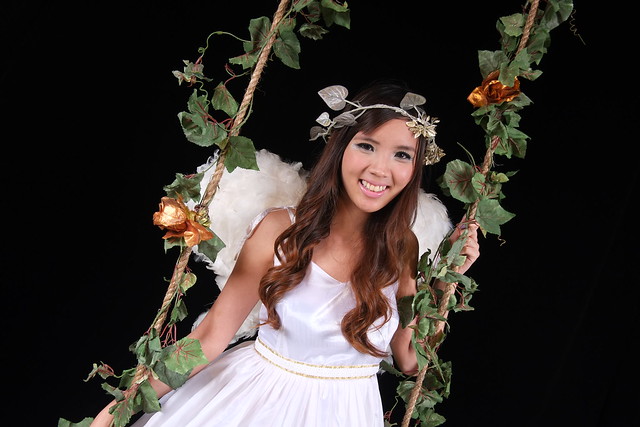Interchangeable lens camera system from FUJIFILM FUJIFILM X-Pro1
Featuring new X-Trans CMOS sensor(TM)
FUJIFILM original X-Mount and Hybrid Multi Viewfinder
[22 Feb 2012] FUJIFILM Corporation is proud to announce the official launch of FUJIFILM X-Pro1, an all-new interchangeable lens camera system in Singapore. The X-Pro1 features a 16 megapixel APS-C X-Trans CMOS sensor(TM), a brand new X lens mount, Hybrid Multi Viewfinder and three prime lenses.
Pricing and availability
The recommended retail pricing for X-Pro1 is as followings:
Body: S$2400 (inclusive of 7% GST)
Basic lens: S$900 to S$1000 (inclusive of 7% GST)
The FUJIFILM X-Pro1 will be available in all major electronics retailers in Singapore in March 2012.

FUJIFILM X-Pro1 – The Main Features
1. Setting new standards in image resolution
- FUJIFILM has developed a new CMOS sensor called the X-Trans CMOSTM. The X-Trans CMOS(TM) sensor is capable of delivering resolution that is parallel, if not superior, to a full frame sensor.
- The new colour filter array paves the way for an ideal sensor that does not need an optical low-pass filter. While the optical low-pass filter is indispensable for the reduction of moiré and false colour generated by conventional sensors, it also degrades resolution. FUJIFILM has developed a new colour filter array that is inspired by the random arrangement of fine film grain, removing the need for an optical low-pass filter to solve moiré and false colour issues. In the array, RGB pixels are arranged in 6x6 pixel sets with high aperiodicity (randomness). Increasing the degree of randomness eliminates the fundamental cause of moiré and false colours – a problem that occurs in conventional arrays when shooting stripes and other repeating patterns. The presence of an R, G and B pixel in every vertical and horizontal pixel series minimises the generation of false colours and delivers higher colour reproduction.
- EXR Processor Pro : As a result of using a film-inspired array, a more powerful processor is required to process the image signal data. So FUJIFILM has created the EXR Processor Pro. This development will maximise the full potential of the X-Trans CMOS(TM) sensor and deliver high speed and high precision image processing.

Featuring new X-Trans CMOS sensor(TM)
FUJIFILM original X-Mount and Hybrid Multi Viewfinder
[22 Feb 2012] FUJIFILM Corporation is proud to announce the official launch of FUJIFILM X-Pro1, an all-new interchangeable lens camera system in Singapore. The X-Pro1 features a 16 megapixel APS-C X-Trans CMOS sensor(TM), a brand new X lens mount, Hybrid Multi Viewfinder and three prime lenses.
Pricing and availability
The recommended retail pricing for X-Pro1 is as followings:
Body: S$2400 (inclusive of 7% GST)
Basic lens: S$900 to S$1000 (inclusive of 7% GST)
The FUJIFILM X-Pro1 will be available in all major electronics retailers in Singapore in March 2012.

FUJIFILM X-Pro1 – The Main Features
1. Setting new standards in image resolution
- FUJIFILM has developed a new CMOS sensor called the X-Trans CMOSTM. The X-Trans CMOS(TM) sensor is capable of delivering resolution that is parallel, if not superior, to a full frame sensor.
- The new colour filter array paves the way for an ideal sensor that does not need an optical low-pass filter. While the optical low-pass filter is indispensable for the reduction of moiré and false colour generated by conventional sensors, it also degrades resolution. FUJIFILM has developed a new colour filter array that is inspired by the random arrangement of fine film grain, removing the need for an optical low-pass filter to solve moiré and false colour issues. In the array, RGB pixels are arranged in 6x6 pixel sets with high aperiodicity (randomness). Increasing the degree of randomness eliminates the fundamental cause of moiré and false colours – a problem that occurs in conventional arrays when shooting stripes and other repeating patterns. The presence of an R, G and B pixel in every vertical and horizontal pixel series minimises the generation of false colours and delivers higher colour reproduction.
- EXR Processor Pro : As a result of using a film-inspired array, a more powerful processor is required to process the image signal data. So FUJIFILM has created the EXR Processor Pro. This development will maximise the full potential of the X-Trans CMOS(TM) sensor and deliver high speed and high precision image processing.

Last edited:




























